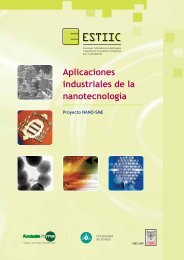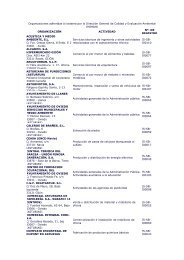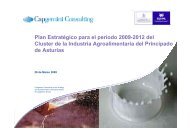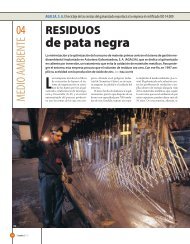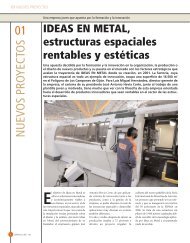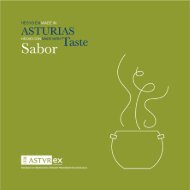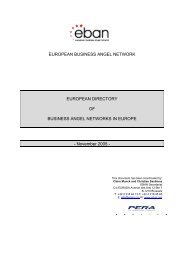05. Sidra, vino y aguas de Asturias - Idepa
05. Sidra, vino y aguas de Asturias - Idepa
05. Sidra, vino y aguas de Asturias - Idepa
Create successful ePaper yourself
Turn your PDF publications into a flip-book with our unique Google optimized e-Paper software.
<strong>05.</strong> <strong>Sidra</strong>, <strong>vino</strong><br />
y <strong>aguas</strong> <strong>de</strong> <strong>Asturias</strong><br />
Ci<strong>de</strong>r, wine and water from <strong>Asturias</strong><br />
Botella i<strong>de</strong>ntificada<br />
con su etiqueta<br />
<strong>de</strong> <strong>de</strong>nominación <strong>de</strong> origen.<br />
La sidra es la bebida tradicional asturiana y una <strong>de</strong> sus señas<br />
<strong>de</strong> i<strong>de</strong>ntidad gastronómica. A base <strong>de</strong> zumo <strong>de</strong> manzana<br />
A bottle i<strong>de</strong>ntified by its<br />
<strong>de</strong>signation of origin label.<br />
fermentado, ha sido elaborada en pequeños lagares (bo<strong>de</strong>gas)<br />
<strong>de</strong> forma artesanal <strong>de</strong>s<strong>de</strong> tiempo inmemorial. Esta gran tradición<br />
se transformó a lo largo <strong>de</strong>l siglo XX en una mo<strong>de</strong>rna<br />
industria sidrera con mo<strong>de</strong>rnos lagares dotados <strong>de</strong> todos los<br />
a<strong>de</strong>lantos tecnológicos, como los sistemas <strong>de</strong> control <strong>de</strong> temperatura,<br />
<strong>de</strong> prensado y filtrado, plantas embotelladoras, etc.<br />
12<br />
Todo ello combinado con el método tradicional <strong>de</strong> elaboración<br />
se produce una bebida <strong>de</strong> baja graduación alcohólica en<br />
tres varieda<strong>de</strong>s diferentes.<br />
13<br />
La sidra natural (no filtrada), que se bebe tras ser «escan-<br />
Ci<strong>de</strong>r is the traditional Asturian drink and one of its distinguishing<br />
ciada» (haciendo caer el chorro contra el lateral <strong>de</strong> un vaso<br />
marks with regards cuisine. Ma<strong>de</strong> from fermented apple juice, it has been<br />
especial, <strong>de</strong> cristal muy fino). Es la bebida típica para <strong>de</strong>gustar<br />
prepared in small presses (cellars) by hand for time immemorial. This great<br />
con un grupo <strong>de</strong> amigos acompañada <strong>de</strong> cualquier tipo <strong>de</strong> ape-<br />
tradition was transformed over the 20th century into a mo<strong>de</strong>rn ci<strong>de</strong>r inritivo<br />
o comida informal.<br />
dustry with mo<strong>de</strong>rn presses equipped with all technological advances, such<br />
as temperature control systems, pressing and filtering systems and bottling<br />
plants, etc. All this combined with the traditional production method gives a<br />
drink with a low alcohol content in three different varieties.<br />
La sidra <strong>de</strong> nueva expresión (sometida a un proceso <strong>de</strong><br />
filtrado) es una bebida elegante que sirve <strong>de</strong> perfecto acompañamiento<br />
<strong>de</strong> aperitivos, aves, pescados y mariscos.<br />
La sidra espumosa es una sidra tradicional sometida a una<br />
segunda fermentación siguiendo el método champenoise, que<br />
resulta i<strong>de</strong>al para tomar con pescados, mariscos y cualquier<br />
tipo <strong>de</strong> postres o dulces.<br />
Como complemento <strong>de</strong> la sidra, en <strong>Asturias</strong> se elaboran diferentes<br />
<strong>de</strong> varieda<strong>de</strong>s <strong>de</strong> licores <strong>de</strong> manzana, <strong>de</strong>stilados <strong>de</strong><br />
manzana, zumos, licores y mermeladas <strong>de</strong> diferentes frutas y<br />
vinagres a base <strong>de</strong> manzana.<br />
Abajo, la sidra es escanciada y<br />
espalma en el vaso. Manzanas<br />
en un “pomar” asturiano.<br />
Below, ci<strong>de</strong>r is «thrown» and foam remains in<br />
the glass. Apples in an Asturian «pomar».<br />
A la <strong>de</strong>recha, algunas varieda<strong>de</strong>s<br />
<strong>de</strong> sidra: espumosa, <strong>de</strong> nueva<br />
expresión y natural.<br />
To the right, some varieties of ci<strong>de</strong>r:<br />
sparkling, of new expression and natural.<br />
Natural ci<strong>de</strong>r (not filtered), which is drunk after being “thrown” (making<br />
the ci<strong>de</strong>r fall against the si<strong>de</strong> of a special, very fine glass). This is the typical<br />
drink to be tasted with a group of friends together by any kind of snack or<br />
informal meal.<br />
Ci<strong>de</strong>r of new expression (subject to a filtering process) is an elegant<br />
drink that is a perfect accompaniment to snacks, poultry, fish and shellfish.<br />
Sparkling ci<strong>de</strong>r is a traditional ci<strong>de</strong>r subject to a second fermentation<br />
following the champagnoise method. It is i<strong>de</strong>al with fish, shellfish and any<br />
kind of <strong>de</strong>sserts or sweets.<br />
In addition to ci<strong>de</strong>r, different varieties of apple liqueurs and spirits and<br />
juices, liqueurs and jams ma<strong>de</strong> from different fruit and apple-based vinegars<br />
are produced in <strong>Asturias</strong>.
14<br />
El cultivo <strong>de</strong> la vid y la elaboración<br />
<strong>de</strong> <strong>vino</strong>s, protagonistas en<br />
Cangas <strong>de</strong>l Narcea.<br />
Vine growing and wine production take<br />
the centre stage in Cangas <strong>de</strong>l Narcea.<br />
El cultivo <strong>de</strong> la vid y la elaboración <strong>de</strong> <strong>vino</strong>s han sido tradicionales<br />
en la zona Occi<strong>de</strong>ntal <strong>de</strong> <strong>Asturias</strong> <strong>de</strong>s<strong>de</strong> la Edad Media.<br />
No obstante <strong>de</strong>s<strong>de</strong> mediados <strong>de</strong>l siglo XIX la actividad <strong>de</strong>cayó<br />
hasta finales <strong>de</strong>l siglo XX. En 1997 se constituyó con el respaldo<br />
<strong>de</strong> la Administración, la Asociación <strong>de</strong> Productores y Elaboradores<br />
<strong>de</strong> Vino <strong>de</strong> Cangas, iniciándose un proceso <strong>de</strong> mo<strong>de</strong>rnización<br />
<strong>de</strong> los viñedos y formación <strong>de</strong> los viticultores. Esa<br />
tradición ha sido recuperada, ha obtenido la IGP y las primeras<br />
cosechas <strong>de</strong> <strong>vino</strong>s blancos y tintos han recibido numerosos elogios<br />
por parte <strong>de</strong> la crítica nacional e internacional.<br />
El agua mineral es otra <strong>de</strong> las bebidas que goza <strong>de</strong> gran<br />
tradición en <strong>Asturias</strong>. Existen numerosos manantiales que producen<br />
<strong>aguas</strong> con diferentes cualida<strong>de</strong>s organolépticas y que,<br />
en algunos casos, sirven <strong>de</strong> materia prima para la producción<br />
<strong>de</strong> <strong>aguas</strong> aromatizadas y con sabores <strong>de</strong> frutas.<br />
Vine growing and wine production have been traditional in the<br />
Western area of <strong>Asturias</strong> since the Middle Ages. However, the activity<br />
<strong>de</strong>clined from the mid-19th century until the late-20th century. In 1997, the<br />
Association of Wine Producers and Preparers of Cangas was constituted<br />
with the support of the Authorities, beginning a mo<strong>de</strong>rnisation process<br />
of the vineyards and the training of vine growers. This tradition has been<br />
recovered, has obtained the PGI and the first harvests of white and red wines<br />
have received countless praise from national and international critics.<br />
Mineral water is another of the extremely traditional drinks from <strong>Asturias</strong>.<br />
There are many springs that produce waters with different organoleptic<br />
qualities that, in some cases, are used as raw materials for the production of<br />
aromatised and fruit-flavoured waters.




